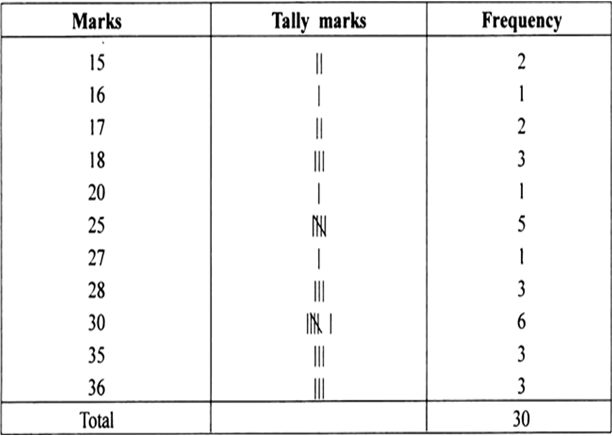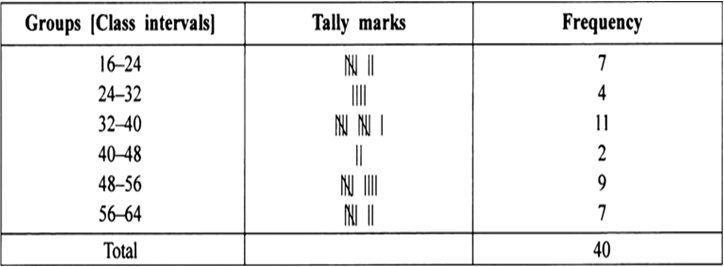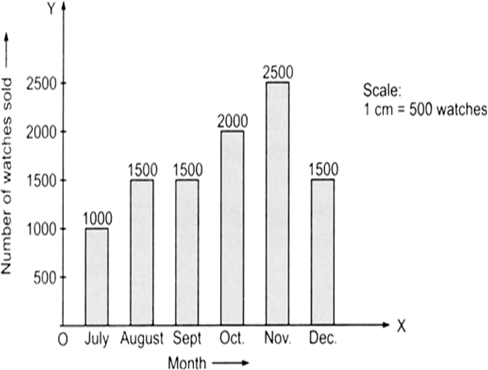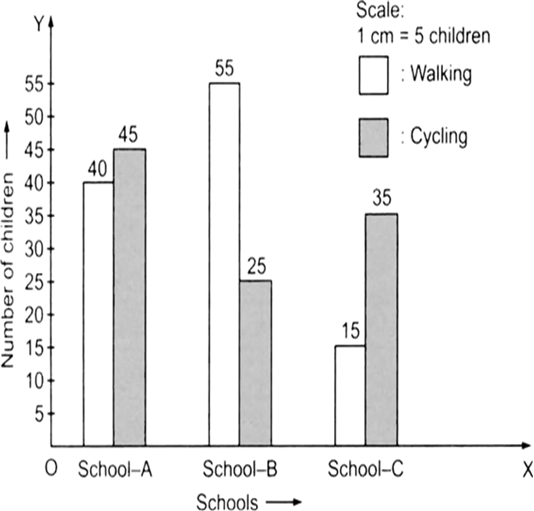Following are the marks scored by 30 students in a test out of 40 marks. Using tally marks prepare a frequency table:
|
30 |
18 |
27 |
15 |
25 |
28 |
15 |
30 |
|
35 |
36 |
25 |
30 |
20 |
28 |
17 |
30 |
|
36 |
35 |
35 |
18 |
30 |
17 |
30 |
|
|
25 |
36 |
28 |
25 |
25 |
18 |
16 |
Using tally marks, the required frequency is as given below:










